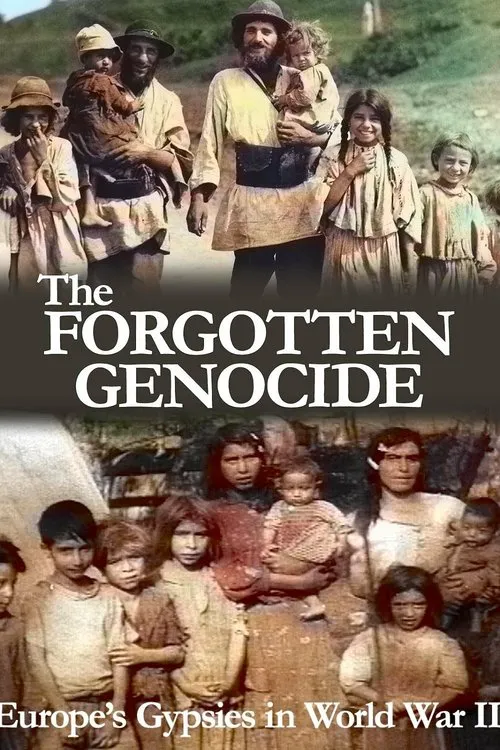The Forgotten Genocide: Europe's Gypsies in World War II

Plot
The documentary "The Forgotten Genocide: Europe's Gypsies in World War II" sheds light on a horrific episode in history that is often overlooked, the systematic persecution and annihilation of the Gypsy population by the Nazis and their collaborators during World War II. The film offers a poignant and disturbing account of this lesser-known atrocity, bringing to the forefront the voices of survivors and featuring previously unseen archival footage. The documentary begins by setting the stage for this genocide, explaining how the Nazis and other European governments saw the Gypsy population, estimated to be around 2-3 million people, as undesirable and "racially inferior." From its inception, the Nazi Party viewed the Gypsies as a threat to their vision of a "pure" Aryan society. As World War II loomed, the Nazis implemented their first anti-Gypsy policies, including restrictive laws, segregation, and forced sterilization. The film follows the architects of this genocide, detailing the involvement of top Nazi officials and local authorities in the persecution of the Gypsies. Heinrich Himmler, the head of the SS, played a key role in the extermination plan, viewing the Gypsies as "undesirable" and "subhuman." The documentary highlights the ways in which the Nazis used propaganda to demonize the Gypsies, portraying them as thieves, beggars, and carriers of disease. As the war escalated, the Nazis and their collaborators implemented a series of brutal measures to eliminate the Gypsy population. In Germany, Poland, and other parts of Eastern Europe, Gypsies were rounded up and sent to concentration camps, where they were subjected to forced labor, starvation, and ultimately, extermination through mass shootings and gassing. The film features heartbreaking interviews with survivors who share their harrowing experiences, offering a glimpse into the terror and despair that gripped the Gypsy community as they were hunted down and exterminated. One survivor recounts how she was sent to Auschwitz, where she was forced to work in the gas chambers, while another talks about watching as his family was massacred in a concentration camp. The documentary also examines the role of local collaborators in the genocide, highlighting the ways in which ordinary citizens were complicit in the persecution of the Gypsies. In some cases, local authorities and villagers provided information about the presence of Gypsies in the area, making it easier for the Nazis to track and arrest them. Through archival footage and primary sources, the film reveals the extent of the genocide, showing how the Nazis and their collaborators carried out mass shootings, forced labor, and gassings in camps across Europe. In one shocking example, the documentary reveals how a group of Gypsy women were taken from their homes in France and sent to Auschwitz, where they were gassed along with their children. Similar atrocities unfolded in other parts of Europe, with Gypsies being rounded up and killed in Romania, Bulgaria, and Serbia. As the war drew to a close, the Nazis and their collaborators implemented a final, brutal wave of extermination, killing thousands of Gypsies in the last few months of the conflict. The documentary ends with a devastating estimate of the death toll, placing the number of Gypsy victims at between 220,000 to 500,000 people. "The Forgotten Genocide" is a powerful and poignant tribute to the millions of Gypsies who lost their lives in the Holocaust. By bringing this forgotten episode in history to light, the documentary serves as a reminder of the dangers of racism and xenophobia, and the importance of preserving the memories of those who suffered and died in the Holocaust. As the film concludes, the survivors' testimonies echo through the years, a haunting reminder of the horrors of the past and the need for continued vigilance in protecting human rights and preventing similar atrocities from occurring in the future.
Reviews
Recommendations



